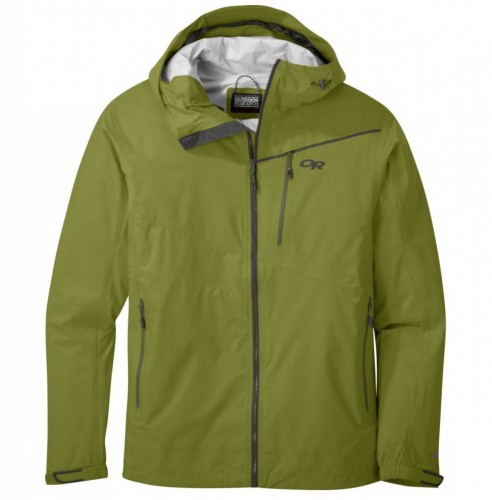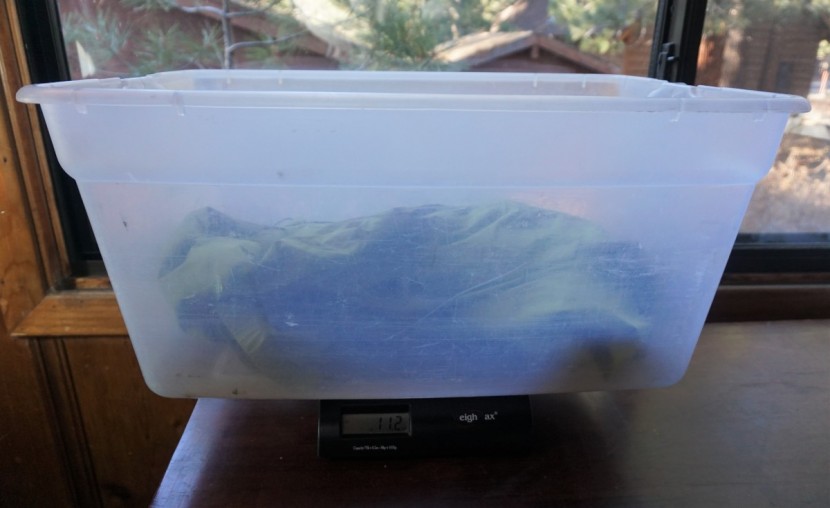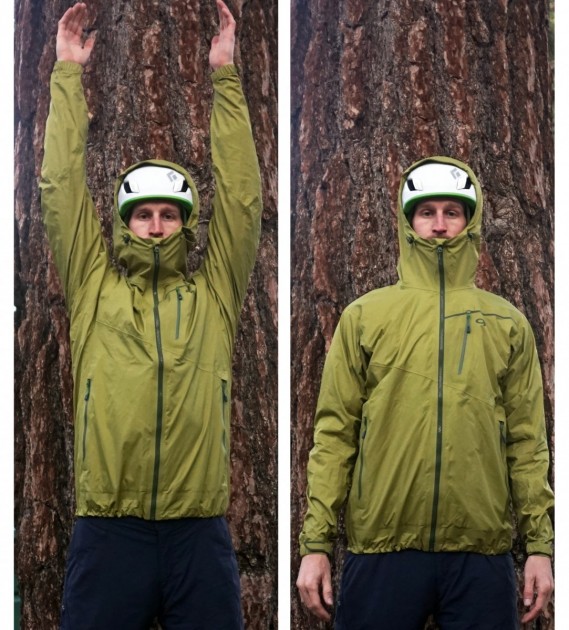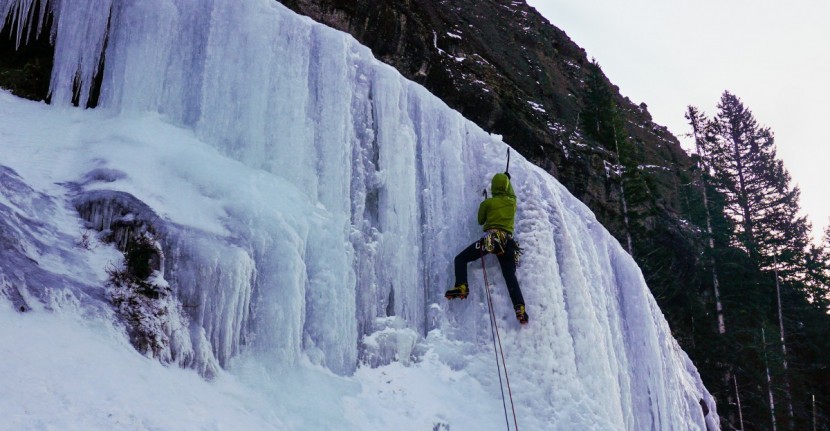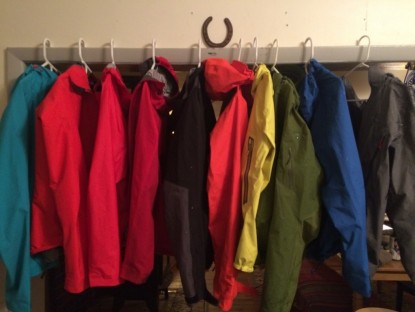Outdoor Research Interstellar Review
Our Verdict
Our Analysis and Test Results
A few years ago, Outdoor Research introduced the Interstellar to replace the Realm jacket, which had previously won our Best Bang for the Buck Award. The Interstellar uses the same AscentShell membrane paired with a stretchy and light 20-denier ripstop nylon face fabric in an almost identical design. In fact, the only noticeable differences between the two are that the Interstellar added double zippered handwarmer pockets while downsizing to a single chest pocket.
While the Interstellar excels at breathability, it also has a few flaws. Most notably, the features on this jacket, taken as a whole, are not quite as fine-tuned in terms of design and performance as some of the other hardshells in this review. The Interstellar also uses very light fabrics for the face and backer, and we worry about the ability of this jacket to hold up to years of intense abuse as well as heavier jackets made with Gore-Tex Pro.
Weather Protection
On most wintry occasions, the weather protection offered by this contender is plenty, but we don't feel like its AscentShell fabric does as well as Gore-Tex Pro during sustained rain or wet snow. The DWR coating seemed to wear off pretty quickly, especially in areas of wear, such as on the shoulders and waist where backpack straps rub. It was one of the first jackets to start wetting out, after roughly two months into testing.
The hood is plenty deep without a helmet and seemed to offer enough protection from a downpour in our shower test. The latest version of the Interstellar also includes a "hood lock" on the back that you can clip to improve the fit when you're wearing it helmet-less. This feature worked okay, but the tab it's supposed to clip to snapped early in our tests.
When wearing a helmet, however, our testers found that the brim didn't effectively cover their faces, instead allowing water to flow off the top and, at times, down the collar. On the other hand, the length and fit of the hem, sleeves, and even the collar are pretty much ideal for keeping you protected from blowing snow on stormy ski missions.
Weight
A men's size large weighed in at a mere 11.2 ounces, making it one of the lightest three-layer hardshells in this review. This is ideal if you live in a dry climate, and your hardshell rarely leaves your pack.
Although the Interstellar weighed in about 0.2 ounces heavier than its predecessor, this is a minor detail considering it added two handwarmer pockets and the associated material. We appreciate that the Interstellar can stuff into one of these hand pockets and has a clip-in loop hidden inside. The clip-in loop, however, feels weak, and the mesh pocket lining composes half of this improvised stuff sack. We wouldn't trust either to properly secure the jacket while clipping them to a climbing harness.
Mobility and Fit
Our lead tester is 6'2" tall, 175 pounds, with fairly broad shoulders but a skinnier frame. We ordered him a men's size large, and it was a good call because the jacket fits him perfectly. There was plenty of room for a couple of layers underneath, but it didn't feel too baggy when worn with a single base layer. In no way did we feel like this jacket impeded our vision or movement while wearing it. That said, for those on the cusp between sizes, we suggest sizing up to be on the safe side.
When it comes to mobility, the Interstellar is close to perfect. In direct contrast to any jacket that uses a Gore-Tex Pro membrane, such as the Arc'teryx Alpha FL, this jacket is supple and quiet, without any crinkly noise when you move. The fabric is soft and stretchy, providing zero resistance when ice climbing or skiing, which allows the fit to more athletic without compromising movement. There is a moderate rise in the hem with arms overhead, but not enough for it to untuck from a harness.
Venting and Breathability
When examining venting and breathability, it's clear that the Interstellar needs to rely more on its ability to breathe than on its ability to vent. It doesn't have any pit or underarm vents. It's possible to create some airflow, however, by opening any of the three mesh-lined pockets. Just be sure there's nothing in them before you leave them open.
Typically, we find that a jacket's ability to vent is more critical to the wearer's comfort level than its ability to breathe. On our stationary bike test, however, we got noticeably less hot and sweaty in this jacket than with almost any other. We aren't entirely sure if this has to do with the air-permeability of the AscentShell membrane or the thinness of the 20-denier face fabric, but whatever the reason, we were impressed. We verified this finding by wearing this jacket for the full uphill on a few skin tracks and can say without a doubt that it will do a great job keeping you cool and dry.
Features & Design
The features on this jacket certainly perform as advertised, but compared to some of its top-shelf rivals, they're not quite up to par.
This jacket has two large handwarmer pockets with mesh backing, as well as one exterior cross-over chest pocket. While the handwarmer pockets are accessible with a pack on, the waist strap of a pack sits over the lower part of the pockets, which can cause irritation if you're carrying anything hard or sharp inside. The single chest pocket features a nice cell phone pouch made of mesh, but there is no media port or hole for your headphone cord to run inside the jacket up to your ears. We also wonder about the purpose of this hanging cell phone pocket at all because it is pretty hard to get a phone into it.
The drawcord buckles used on the hood, as well as the single hem drawcord, are small and difficult to release when wearing thick warm gloves. The two hood drawcords on the chest are also challenging to cinch with gloves on, and it's not clear to us whether they're designed to be operated from inside or outside the jacket. Besides lacking pit zips, the Interstellar also uses a one-way main zipper that reduces your venting options.
Value
The Interstellar's greatest attribute is probably its price. You can easily spend twice as much on a heavier hardshell that won't breathe as well. For this reason, we consider it an exceptional value. Keep in mind, however, that this jacket isn't as burly as many others, so if you really abuse it, you might have to buy two.
Conclusion
The Outdoor Research Interstellar is a very light hardshell jacket that combines fantastic mobility with outstanding breathability. It is also one of the most affordable hardshells that we have tested. We have some concerns about its durability and weather protection in harsh conditions, but these concerns shouldn't be too much for many hardshell shoppers.


